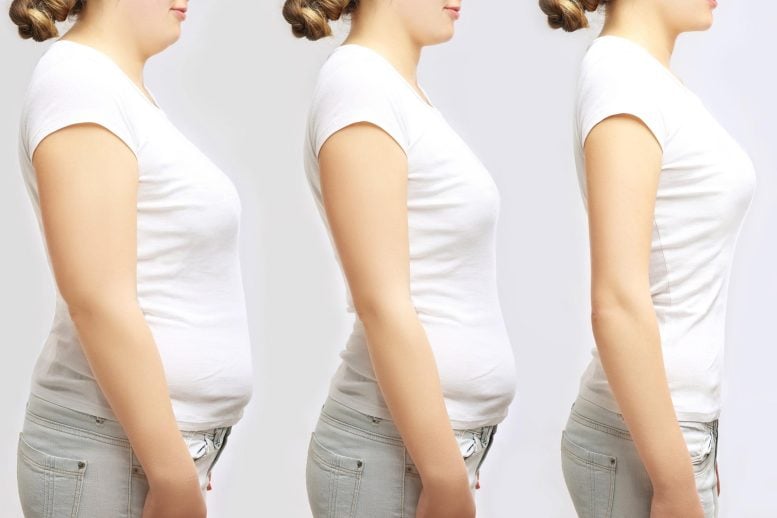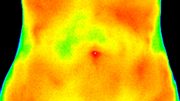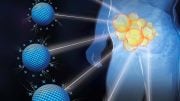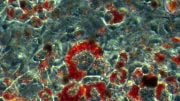
New research from Cornell’s Division of Nutritional Sciences suggests that stimulating the production of beige fat cells could reverse the effects of a slowing metabolism and help prevent age-related weight gain, obesity, and associated health disorders. Beige fat cells, a subtype of white adipose tissue, share thermogenic properties with brown adipose tissue, helping reduce blood sugar and fatty acids that contribute to heart disease. As people age, the response to cold temperatures, which stimulates beige fat production, weakens. The study discovered a specific signaling pathway that suppresses beige fat formation in older mice. By suppressing this pathway, scientists were able to prompt beige fat production in aged animals that otherwise would not produce it.
Cornell researchers have found that stimulating beige fat cell production may help prevent age-related weight gain and associated health issues. By suppressing a specific signaling pathway, beige fat production was increased in older mice, potentially offering a therapeutic approach for humans.
New research suggests a strategy to ward off age-related weight gain, which could prevent obesity and associated health disorders like Type 2 diabetes, heart disease, and chronic inflammation.
By stimulating the production of a certain type of fat cells, the effects of a slowing metabolism could be reversed, according to a new study by researchers in Cornell’s Division of Nutritional Sciences, which is housed in the College of Human Ecology and the College of Agriculture and Life Sciences.
Mammals, including humans, have two main types of fat: white adipose tissue (WAT), which stores energy from excess calorie intake, and brown adipose tissue (BAT), which burns calories to produce heat to maintain body temperature.
The study, published on March 31 in the journal Nature Communications, shows therapeutic promise in a third type of fat, a subtype of WAT: beige fat. Beige fat has the same cellular precursors as white fat and the same thermogenic properties as brown fat, which means it helps to reduce blood sugar and the fatty acids that cause hardening of the arteries and heart disease.
When a person experiences sustained exposure to cold temperatures, stem cells known as adipose progenitor cells form thermogenic beige fat cells within white fat. As people age, the response to that stimulus weakens, tipping the balance toward white fat production.
“There are seasonal changes in beige fat in young humans,” said Dan Berry, assistant professor in the Division of Nutritional Sciences, “but an older person would have to stand outside in the snow in their underwear to get those same effects.”
In earlier work, Berry observed that the aging process impairs the formation of beige fat cells in response to cold temperatures. Identify the biochemistry behind the slowdown, he said, and the same process could be reversed to achieve therapeutic outcomes.
“This is the ultimate goal,” said Abigail Benvie, lead author of the new study and a doctoral student researcher in Berry’s lab. “Without having to subject people to cold exposure for prolonged periods of time, are there metabolic pathways we can stimulate that could produce the same effect?”
In the paper, they reveal the role of a specific signaling pathway that suppresses beige fat formation in older mice by antagonizing the immune system. By suppressing that pathway in aging mice, the scientists were able to prompt beige fat production in aged animals that otherwise would not.
Reference: “Age-dependent Pdgfrβ signaling drives adipocyte progenitor dysfunction to alter the beige adipogenic niche in male mice” by Abigail M. Benvie, Derek Lee, Benjamin M. Steiner, Siwen Xue, Yuwei Jiang and Daniel C. Berry, 1 March 2023, Nature Communications.
DOI: 10.1038/s41467-023-37386-z
The study was co-authored by master’s student Derek Lee, Benjamin M. Steiner, Ph.D. ’22, and doctoral student Siwen Xue, along with Yuwei Jiang from the University of Illinois at Chicago. The research was funded through a $2.2 million, five-year grant from the National Institutes of Health. The grant also will enable Berry’s lab to delve deeper into the role of the pathway it has identified, as well as other molecular regulators of beige fat formation and elucidate how their levels and activity change during the aging process.









Its very informative. Keep the information flowing
I dunno. Seems to me only mice are getting adequate medical service these days.
Mice must have AHCA that works I’ve never seen it.